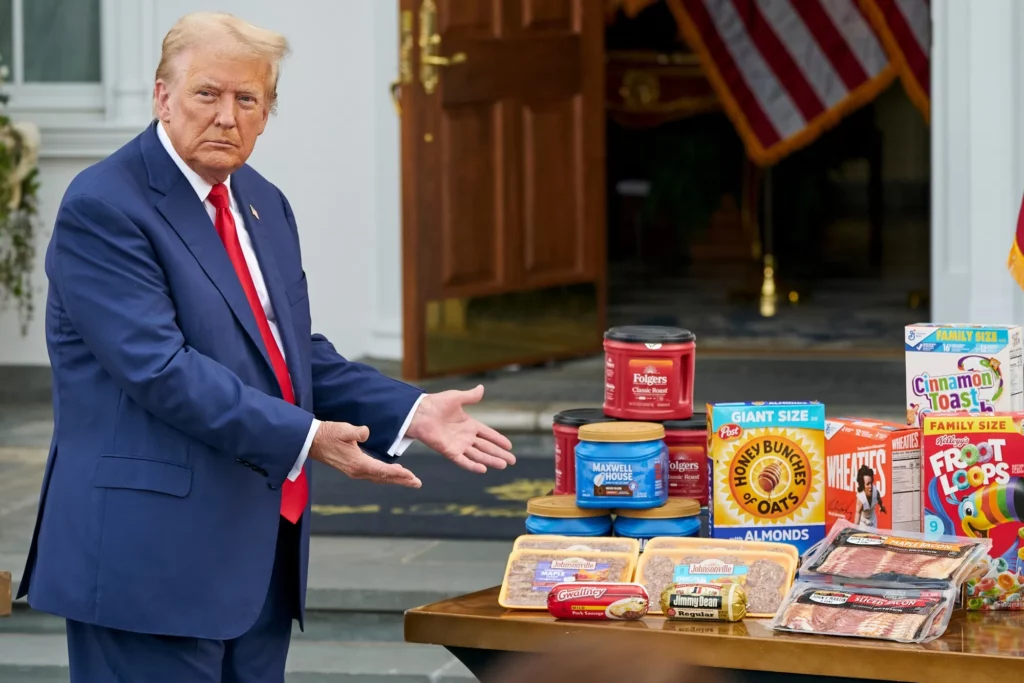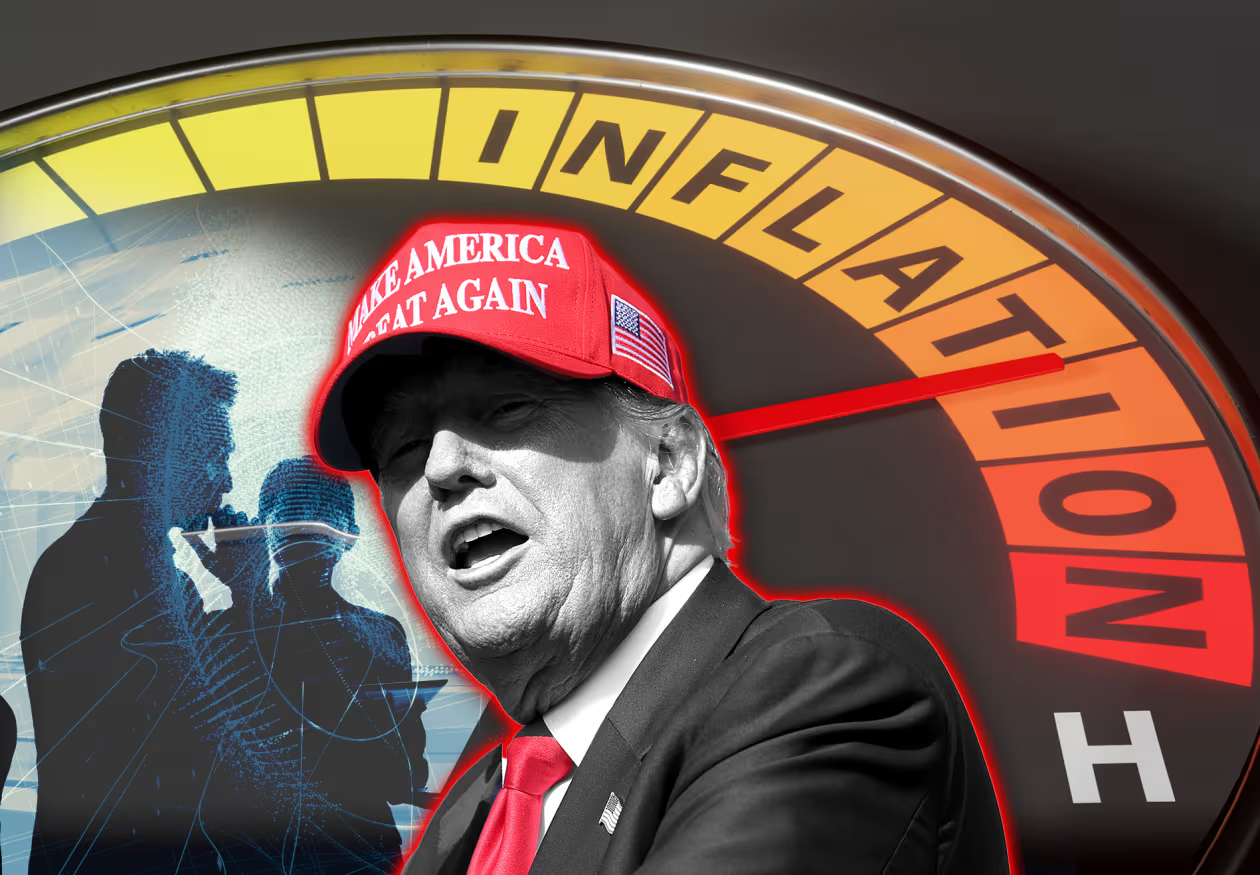Trump’s Tariffs Take Aim—And Your Grocery Cart Could Be in the Crosshairs
Former President Donald Trump’s newly announced tariffs—marketed as a fight for “fair trade”—could bring significant turbulence to American grocery aisles. The sweeping trade measures target countries with high trade surpluses and protective trade barriers, but they could ricochet through the food industry, impacting everything from seafood to your morning cup of coffee.
While framed as a move to bolster U.S. manufacturing and production, these tariffs could instead squeeze the wallets of everyday consumers. Industry experts estimate nearly half of the 40,000 items found in an average supermarket may be affected—either directly or through the cost of imported ingredients.
Here’s a look at which grocery staples could see sticker shock and which may be spared—for now.

Seafood Prices Set to Surge
Why? The U.S. imports up to 85% of its seafood, much of it from tariff-targeted countries like Vietnam (46%), India (26%), Indonesia (32%), and Chile (10%).
What’s at risk? Shrimp, tilapia, salmon, and various shellfish could all spike in price. With domestic supply unable to meet demand, seafood counters are expected to be among the hardest hit.
“This isn’t something we can just ‘buy American’ to fix,” says Andy Harig of The Food Industry Association. “The domestic industry can’t plug that gap.”
Coffee: Your Morning Fix Might Cost More
Why? The U.S. is the world’s largest coffee importer. Brazil and Colombia—responsible for over 60% of roasted coffee imports—have both been hit with 10% tariffs.
Impact: Wholesale costs are expected to rise, putting pressure on roasters and retailers. That means everything from your favorite bag of beans to coffeehouse espresso drinks may see higher prices.
Olive Oil and Imported Cheese: European Imports Get Hit Hard
Why? The European Union faces 20% tariffs under the new measures. Spain, Italy, and Greece are key exporters of olive oil; France and the Netherlands supply premium cheeses.
Expected impact:
- Olive oil prices, already high due to climate and production issues, are likely to skyrocket further.
- Cheese lovers may also feel the squeeze, with products like brie, Gouda, and Parmigiano-Reggiano seeing price hikes due to tariff pressure on specialty imports.
Imported Alcohol: A Double-Whammy
Why? Wine-producing nations like France, Spain, and Italy face steep 20% tariffs. Beer from the Netherlands and Ireland is also impacted. Even canned beers are hit, thanks to China tariffs affecting aluminum costs.
Outcome: From craft cocktails to six-packs of imported lager, drinkers may find their favorites notably pricier.
“The imported alcohol market is going to be clobbered,” said food analyst Phil Lempert.
Tropical Fruits & Vegetables: Some to Rise, Some Safe—for Now
Tariff targets include:
- Bananas, melons, mangoes, and pineapples from Guatemala, Costa Rica, and Honduras (10% tariffs)
- Vegetables from Peru, Ecuador, and China
Safe (for now):
- Avocados from Mexico (tariff-free)
- Most fresh veggies from Canada and Mexico, which supply nearly 90% of imports and escaped the new tariffs
Still, perishability means even modest delays or price shifts in transport can disrupt the supply chain and push prices higher.
What Might Remain Stable?
Beef and rice are two essentials that could avoid major tariff-related shocks—though they’re not immune to other market forces.
- Beef: Around 90% of beef consumed in the U.S. is domestic. However, record-high prices and a historically low cattle herd may keep beef costs high even without new tariffs.
- Rice: Mostly produced domestically, though jasmine and basmati rice from Thailand and India could rise in price due to tariffs.
Behind the Politics: What’s the Endgame?
Trump’s administration insists these tariffs are about fairness and economic strength. Countries with long-standing trade surpluses with the U.S. are being forced to reckon with what Trump calls a decades-long imbalance.
“Over the decades, they ripped us off like no country has ever been ripped off in history,” Trump said in a Rose Garden briefing.
But for grocers, restaurants, and everyday consumers, this economic chess match could translate into higher food bills, supply disruptions, and inflationary pressure across the board.
A New Era for Grocery Economics?
While tariffs may encourage long-term investment in domestic food production, the immediate result is clear: price volatility, supply bottlenecks, and a growing burden on U.S. consumers.
As the trade war rhetoric ramps up, the weekly grocery run could soon feel more like a luxury shopping trip—particularly for items that have long depended on efficient, tariff-free global supply chains.
Bottom Line:
From seafood counters to coffee aisles, tariffs are poised to upend grocery economics. Consumers should brace for cost increases, especially on imported goods—unless trade policy pivots or supply chains rapidly adjust, the squeeze will continue at the checkout line.




